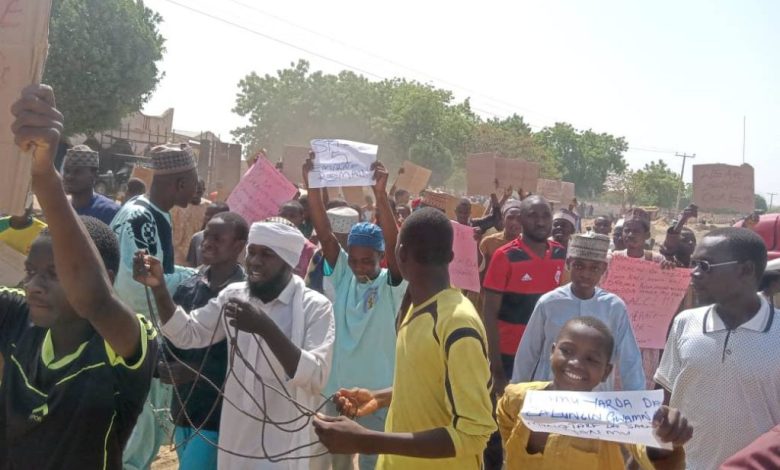
Many residents of Gaya in Kano State have trooped out to the streets to protest against the dissolution of the Gaya Emirate by the state government and the subsequent return of Emir Sanusi Lamido as the Emir of only Kano.
Gaya Emirate is one of the emirate councils recently dissolved by the Kano State Government after the Kano Emirates Council Law of 2019 was amended.
The new law, passed by the House of Assembly, repealed the law that former Governor Abdullahi Ganduje used in 2020 to create the additional emirates and dethrone the 14th Emir of Kano, Muhammadu Sanusi II.
The dissolution of the emirate councils was finalised when Governor Abba Yusuf signed the amendment bill into law on Thursday and ordered the emirs of the affected emirates, including Aliyu Ibrahim Abdulkadir, Emir of Gaya, to hand over to Deputy Governor Abdulsalam Gwarzo. Gwarzo oversees the Ministry of Local Government and Chieftaincy Affairs.
Residents reported that the dethroned emir vacated the palace at midnight on Thursday, with no immediate signs of violence or resistance. Armed security personnel were present in the town, maintaining order.
But on Sunday morning residents took to the streets, wielding placards and chanting anti-government songs.
They accused the government of political motives behind the dissolution and demanded the reinstatement of their emirate and the removed emir.
“Some people are not happy with this development. It feels like an injustice to our community,” Abubakar Shuaibu said.
Another protester, Aminu Abdullahi, stated, “We see this as a political move to undermine our traditional institutions. The government should reconsider its decision and respect our cultural heritage.”
The protesters pledged their allegiance to the traditional leadership and called for the reinstatement of the Gaya Emirate.
Governor Abba Yusuf has yet to respond to the protests as at press time.
However, the government’s initial stance suggests that the dissolution is part of a broader strategy to centralise control and streamline the traditional leadership structure in Kano State.
The developments continue to unfold as the affected communities await further clarification and possible resolutions from the state authorities.
